Judi Lynn
Judi Lynn's JournalSun Sets in Perfect Alignment With New York Grid To Create 'Manhattanhenge'
BY ARISTOS GEORGIOU ON 5/29/22 AT 6:00 AM EDT
In the coming days, the sun will set in perfect alignment with Manhattan's street grid to create the stunning phenomenon that has been dubbed "Manhattanhenge."
This phenomenon takes place on four evenings every year, providing spectacular photo opportunities for New Yorkers and visitors alike.
The term refers to England's Stonehenge, which was built in such a way that on the day of the summer solstice, the sun rises in perfect alignment with several of the stones.
"Manhattanhenge is a name coined by Neil deGrasse Tyson for the days of the year when the sun sets perfectly aligned with the grid of Manhattan. So, it is perfectly framed by the concrete jungle of this great city," Jacqueline Faherty, an astrophysicist from the American Museum of Natural History (AMNH) in New York told Newsweek.
More:
https://www.newsweek.com/sun-sets-perfect-alignment-new-york-grid-create-manhattanhenge-1710972?piano_t=1
See many excellent "Manhattanhenge" photos at google images at this link:
https://tinyurl.com/ywmfvbu8
Lidar reveals pre-Hispanic low-density urbanism in the Bolivian Amazon
Published: 25 May 2022
Heiko Prümers, Carla Jaimes Betancourt, José Iriarte, Mark Robinson & Martin Schaich
Abstract
Archaeological remains of agrarian-based, low-density urbananism1,2,3 have been reported to exist beneath the tropical forests of Southeast Asia, Sri Lanka and Central America4,5,6. However, beyond some large interconnected settlements in southern Amazonia7,8,9, there has been no such evidence for pre-Hispanic Amazonia. Here we present lidar data of sites belonging to the Casarabe culture (around AD?500 to AD?1400)10,11,12,13 in the Llanos de Mojos savannah–forest mosaic, southwest Amazonia, revealing the presence of two remarkably large sites (147?ha and 315?ha) in a dense four-tiered settlement system. The Casarabe culture area, as far as known today, spans approximately 4,500?km2, with one of the large settlement sites controlling an area of approximately 500?km2. The civic-ceremonial architecture of these large settlement sites includes stepped platforms, on top of which lie U-shaped structures, rectangular platform mounds and conical pyramids (which are up to 22?m tall). The large settlement sites are surrounded by ranked concentric polygonal banks and represent central nodes that are connected to lower-ranked sites by straight, raised causeways that stretch over several kilometres. Massive water-management infrastructure, composed of canals and reservoirs, complete the settlement system in an anthropogenically modified landscape. Our results indicate that the Casarabe-culture settlement pattern represents a type of tropical low-density urbanism that has not previously been described in Amazonia.
Main
During the Late Holocene epoch, pre-Hispanic agriculturalists in the Llanos de Mojos, Bolivia, transformed the most-extensive, seasonally flooded, Amazonian savannahs (120,000?km2—roughly the size of England) into productive agricultural and aquacultural landscapes with an apparent diversity in sociopolitical organization, water-control systems and economic bases14,15,16,17. The southeast sector of the Llanos de Mojos (our study region) benefits from soils that have advantageous agricultural properties because of the deposition of a mid-Holocene sedimentary lobe that creates a slightly more elevated topography than the surrounding Llanos de Mojos, which in turn, provides base-rich, Andean-derived, well-drained soils18. The Casarabe culture developed here between around AD?500 and AD?1400, spreading over an area of 4,500?km2 (see ‘Chronology’ in the Supplementary Information, Supplementary Figs. 3–5 and Supplementary Tables 2–4). Previous remote-sensing and field-reconnaissance analyses have revealed the presence of 189 large monumental sites (locally known as ‘lomas’), 273 smaller sites and 957?km of canals and causeways10,19 (Supplementary Table 1). Excavations and bioarchaeology indicate that monumental sites were not unoccupied ceremonial centres but inhabited throughout the year by agriculturalists who cultivated a diversity of crops, with maize (Zea mays) as the primary staple10,11,12,20,21, and who met their protein needs by hunting22 and fishing23.
Despite these important advances in the archaeology of the Casarabe culture, until now, we knew the extent and details of mounded architecture only from less than a handful of isolated sites (Extended Data Figs. 5a, 7) because of the logistical difficulties of mapping sites in tropical forested settings. As a result, our understanding of the civic-ceremonial architecture of the major sites and the regional organization of the Casarabe-culture settlements has remained poorly understood. To remedy this situation, we conducted airborne laser mapping for six areas (10–85?km2) that have known concentrations of major settlements, totalling 204?km2 (Fig. 1).
Lidar (light detection and ranging) documented in detail the two large settlement sites and 24 smaller sites, of which only 15 were previously known to exist. The new data allowed us to define a four-tiered hierarchy classification of sites (Supplementary Table 5) on the basis of (1) the dimensions of human-made base platforms; (2) the elaboration of the civic-ceremonial architecture on top of them; (3) the presence, number and total area enclosed by the outermost polygonal enclosures (Figs. 2, 3 and Extended Data Figs. 1–4); (4) the number of constructed, straight causeways leading to the site (Fig. 3); and (5) the scale of investment in water-management infrastructure, including systems of canals and water reservoirs (see Supplementary Information for a detailed description of the architectural elements and a description of representative sites).
More:
https://www.nature.com/articles/s41586-022-04780-4
Also posted in Anthropology:
https://www.democraticunderground.com/12298080
A BEAGLE BEFRIENDED AN INJURED SLOTH AND NOW THEY SNUGGLE
by Melissa Truth Miller
May 13 2022 • 7:13 AM
Some cuteness for your feed. The latest unlikely animal friendship is between a beagle and a sloth. The pair live in Venezuela. Chuwie the sloth was rescued after being badly burned by power lines. The beagle, named Seven, is part of a pack of dogs living with the rescuers. Seven wanted to be friends with Chuwie, and her patience paid off with lots of snuggles and scritches.
Like human friendships, shared interests were part of the journey for Seven and Chuwie. In the video, the beagle brings toys for the sloth to play with. She also tries out eating leaves, which is what the sloth spends much of his day doing.
We learned about this cuteness overload thanks to Laughing Squid. It’s clear from Seven’s Instagram page that Chuwie is now friends with the entire pack of beagles. Other sloths rescued by the center are returned to the wild. But Chuwie can’t be due to missing claws that sloths need to climb trees and forage for food.
Instead, Chuwie serves as an ambassador for the rescue center. Power lines injure thousand of animals every year in Central and South America. Monkeys and sloths that climb on them are especially vulnerable. There are groups working to have more power lines insulated or buried. Wildlife bridges and other protected crossings save lives.
More:
https://nerdist.com/article/venezuelan-beagle-dog-sloth-best-friends/
Abortion rights activists in the US can learn from recent progress on abortion access in Latin Ameri
Abortion rights activists in the US can learn from recent progress on abortion access in Latin America
BY CNN
MAY 12, 2022
(CNN) — The prospect of the United States overturning decades of abortion rights, which materialized this week in a leaked draft opinion by Supreme Court Justice Samuel Alito, triggered shock waves in many countries in Latin America, where many feminist organizations have often looked at the US as a model of greater reproductive rights and freedoms.
However, that model has flipped on its head in recent years. Just as several US states have put in place further barriers to abortion access through various restrictions, some countries in Latin America have moved in the other direction, with a growing number of countries liberalizing such laws.
Laura Gil, a gynecologist and abortion rights activist in Bogota, Colombia has experienced this turnaround firsthand. “I remember we would meet with health professionals in the US, and for years they would always look at us with admiration for our struggle to expand reproductive rights. Now it’s the opposite,” she told CNN.
The doctor was in Florida when news of the leak broke on Monday. Her US colleagues were disparaged, she said. “They come from an environment where abortion is legal, while for us, abortion used to be banned and now it’s not,” she said.
More:
https://whdh.com/news/abortion-rights-activists-in-the-us-can-learn-from-recent-progress-on-abortion-access-in-latin-america/
Colombian Leftist Front-Runner Says Assassination Risk Very High
1h ago
Matthew Bristow, Bloomberg News
(Bloomberg) -- Police, bodyguards and anti-explosives experts are on high alert to prevent assassins from getting to Colombia’s most divisive presidential candidate in the final weeks before elections.
Colombia is the only major country in Latin America that’s never had a leftist leader, and polls suggest it’s about to get one in Gustavo Petro. That’s raising the campaign temperature in a country with a history of political violence.
“Many alternative presidential candidates have been assassinated, and I’m the one who’s come closest to winning, according to the polls,” Petro said in an interview en route to a rally in eastern Colombia last week. “That is to say, the risk level is very high.”
Petro, 62, may have a point in doubting his safety in a country where four presidential candidates have been murdered since the 1980s. Petro says that his status as the alternative to “traditional power in Colombia” makes him a target ahead of the May 29 first-round vote.
More:
https://www.bnnbloomberg.ca/colombian-leftist-front-runner-says-assassination-risk-very-high-1.1765038
~ ~ ~
Before the 1980's, immediately preceding 10 years of total chaos, and the period called "La Violencia," there was the assassination of the extremely popular leftist presidential candidate, Jorge Eliécer Gaitán:
Wikipedia:
Jorge Eliécer Gaitán Ayala (January 23, 1903 – April 9, 1948) was a left-wing Colombian politician and charismatic leader of the Liberal Party. He served as the mayor of Bogotá from 1936-37, the national Education Minister from 1940-41, and the Labor Minister from 1943–44.[2] He was assassinated during his second presidential campaign in 1948, setting off the Bogotazo [3] and leading to a violent period of political unrest in Colombian history known as La Violencia (approx. 1948 to 1958).
. . .
Gaitán was active in politics in the early 1920s, when he was part of a protest movement against the president Marco Fidel Suárez. Gaitán increased his nationwide popularity following a banana workers' strike in Magdalena in 1928.
After US officials in Colombia, along with United Fruit representatives, portrayed the worker's strike as "communist" with "subversive tendency," in telegrams to the US Secretary of State,[12] the US government threatened to invade with the US Marine Corps if the Colombian government did not act to protect United Fruit's interests[citation needed]. Strikers were fired upon by the army[13] on the orders of the United Fruit Company, which resulted in numerous deaths.
Gaitán used his skills as a lawyer and as an emerging politician in order to defend workers' rights and called for accountability to those involved in the Santa Marta Massacre.[13] Public support soon shifted toward Gaitán; Gaitán's Liberal Party won the 1930 presidential election.[13]
. . .
Assassination
It is widely speculated that Gaitán would likely have been elected President had he not been assassinated on April 9, 1948.[19][13] That occurred immediately prior to the armed insurrection or Bogotazo.[20][13] Gaitán was then the leading opponent of the use of violence and had determined to pursue the strategy of electing a left-wing government, and he had repudiated the violent communist revolutionary approach that was typical of the Cold War era.[21] His assassination directly led to a period of great violence between conservatives and liberals and also facilitated the rise of the existing communist guerrillas.[14] Over the next fifteen years as many as 200,000 people died from the disorder that followed his assassination.[15]
Gaitán's alleged murderer, Juan Roa Sierra, was killed by an enraged mob, and his motivations were never known.[22] Many different entities and individuals have been held responsible as the alleged plotters, including his different critics, but no definite information has ever come forward, and a number of theories persist. Among them, are versions that, sometimes conflictingly, implicate the government of Mariano Ospina Pérez, sectors of the Liberal party, the Soviet Union ,[23] the Colombian Communist Party, or the CIA.[24] According to one version, Roa Sierra acted under the orders of CIA agents John Mepples Spirito (alias Georgio Ricco) and Tomás Elliot, as part of an anti-leftist plan that was supposedly called Operation Pantomime.[citation needed] It is claimed that it would also have involved the complicity of the then Chief of Police, who would allegedly have ordered two police officers to abandon Juan Roa Sierra to be killed by the mob, a claim that conflicts with mainstream accounts of Roa Sierra's death.[25] An eyewitness to the actual events, Guillermo Perez Sarmiento, Director of the United Press in Colombia, stated that upon his arrival Roa was already "between two policemen" and describes in detail the angry mob that kicked and "tore him to pieces" and does not suggest any police involvement.[26
. . .
Other details which have interested historians and researchers include the fact that Gaitán was murdered in the middle of the 9th Pan-American Conference, which was being led by U.S. Secretary of State George Marshall, a meeting which led to a pledge by members to fight communism in the Americas, as well as the creation of the Organization of American States.
More:
https://en.wikipedia.org/wiki/Jorge_Eli%C3%A9cer_Gait%C3%A1n


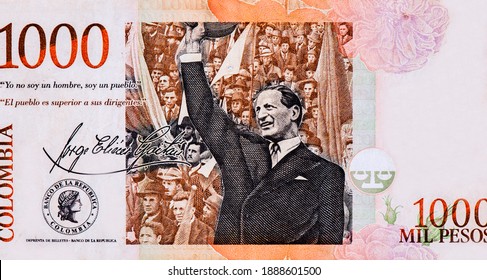


~ ~ ~
Gustavo Petro, Colombia's progressive candidate has always known how deadly life is for liberals in US-heavily supported Colombia, and how much suffering the oligarchy has inflicted from the first, and he still has the courage to try to be the person who brings the country out of the darkness, and puts the interests of the PEOPLE first. He deserves praise, not to have to live in fear for the rest of his life. He has earned real respect. He puts his life in danger every day.

Gustavo Petro
Best wishes.
Argentina ready to supply gas to Europe via Spain
jn/kb 11.05.2022, 20:24
Argentina announced on Tuesday it was ready to create a joint venture with Spain to supply gas to Europe, which is seeking to become independent from Russia’s energy due to the country’s aggression against Ukraine.
Argentinian President Alberto Fernández said after a discussion with Spanish Prime Minister Pedro Sánchez on Tuesday that Argentina had a perfect synergy with Spain to ease the crisis caused by Russia and was ready to become a stable energy supplier to Europe.
As the second largest producer of unconventional gas in the world, Argentina could supply liquified gas to Spain, which has 30 percent of the plants that regasify liquefied gas. The liquified gas would be then turned into natural gas and distributed from Spain to the rest of Europe.
The plan comes in response to European efforts to cut off Russian gas imports in order to stop the indirect funding of Russia’s invasion of Ukraine.
https://tvpworld.com/60127386/argentina-ready-to-supply-gas-to-europe-via-spain
MUSA Underwater Museum of Art in Cancun: Dive Into Art in Isla Mujeres, Mexico
INTERNATIONAL 3 hours
Sheri B Doyle

In the beautiful waters of Isla Mujeres, Mexico, an underwater museum was built nine years ago in an effort to create a sustainable reef-like structure for ocean life. When I saw the MUSA online, I decided I had to dive it.
Once I was underwater, the sculptures were more breathtaking than I had even imagined. Our path first took us to a man working at a desk, complete with a desk phone, paperwork and a friendly-looking dog sitting at his feet. Each detail was perfect on the life-size objects. Next, we swam past a sculpture of an original VW bus and then on to what was the piece de resistance – a collection of 450 life-size sculptures of humans.

Photo: MusaMexico.org
Approaching the exhibit I was taken aback by the volume of statues occupying the 420-square-meter area. Moving closer, the detail on each face brought them to life. There was emotion visible in their expressions and features. It was breathtaking.

Photo: AquaWorld.com
Beautiful pink and purple corals had taken root on the statues' bodies and faces, enhancing the effect of the statues standing together, as if they were migrating to another place. Each statue was modeled after a real person the artist had pose for him. After swimming among the statues, it is truly remarkable how he captured their essence.

Photo: AquaWorld
Article:
https://30seconds.com/travel/tip/17450/MUSA-Underwater-Museum-of-Art-in-Cancun-Dive-Into-Art-in-Isla-Mujeres-Mexico#_=_
(Look for the link under the last photo, the VW Bug to go to "The Silent Evolution of MUSA
September 19, 2016
Diving Articles, Musa" )
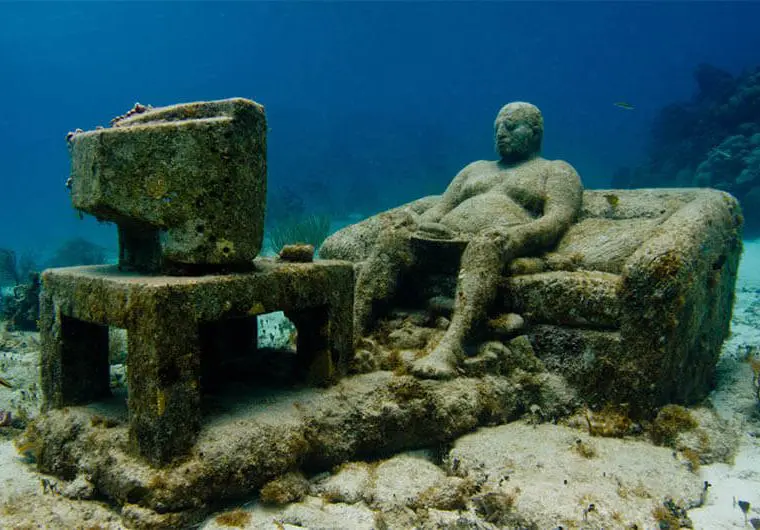



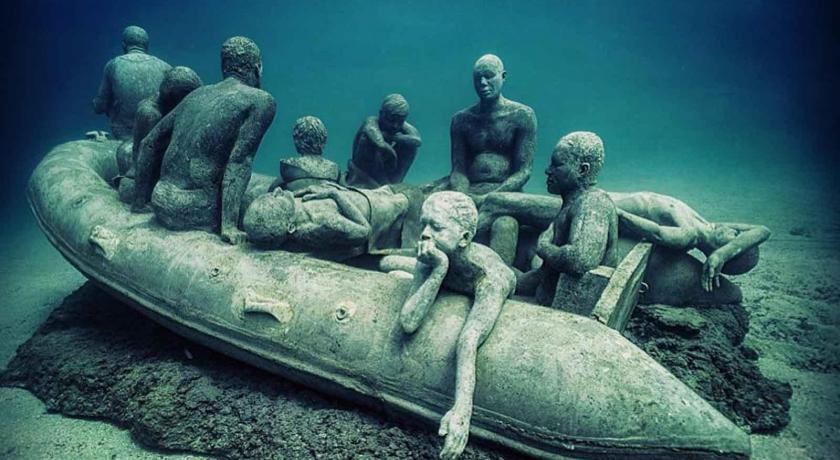



In Brazil, Politicians Push to Privatize Beaches
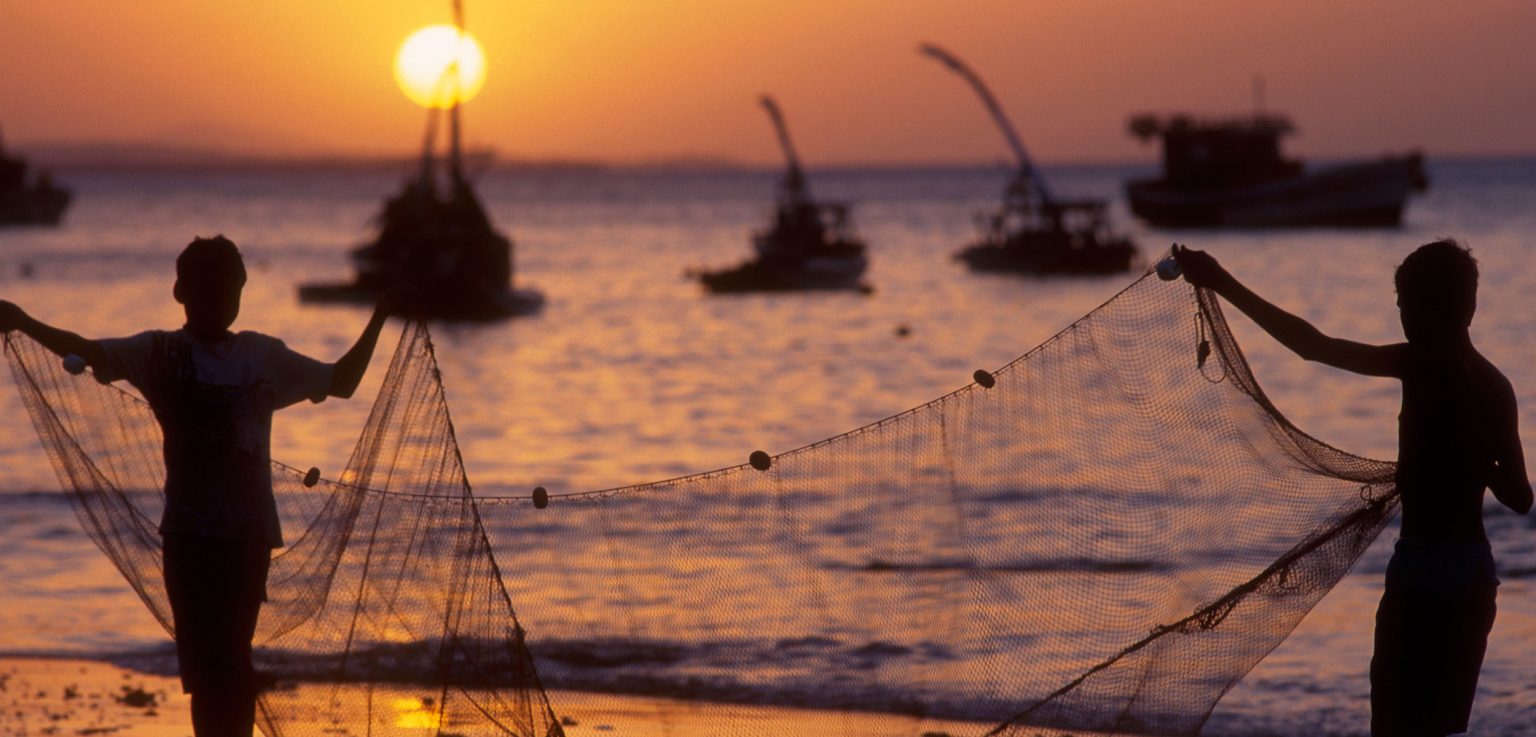
In Brazil, beaches are used by a broad swath of society. A new bill, however, looks set to restrict beach access in favor of tourism development. Photo by BrazilPhotos/Alamy Stock Photo
A new bill that would open a huge chunk of Brazil’s coast to tourism development could have far-reaching consequences.
by Eduardo Campos Lima
May 11, 2022 | 600 words, about 3 minutes
Brazilian politicians with connections to the tourism and hospitality industries are pushing forward a bill that would privatize parts of the country’s beaches. Known as bill 4444/2021, the legislation, proposed by Congressman Isnaldo Bulhões Jr., is ostensibly designed to make the management of federal properties across the country more efficient. The bill sets out a plan to identify and catalog all lands and public buildings and examine who is occupying them, how they are being used, and whether users are paying the appropriate fees. In cases in which non-federal-government users—other branches of government or private users—occupy the land and buildings, the estate will revert back to the federal government.
But nestled within the bill’s text is a controversial provision that gives the government the power to create so-called special zones of tourism use. These zones would convert public beaches—up to 10 percent of the sand strip in a city—to private property, barring access to unauthorized people and opening the beaches up to development by hotels, private parks, clubs, marinas, and other endeavors allowed by Brazil’s Ministry of Tourism.
Though the bill was first put forth in 2021, in February it was deemed an urgent proposition by Brazil’s Chamber of Deputies, a lower house in the country’s National Congress. The move could see it go to a vote imminently. The urgent classification could also exempt the bill from otherwise mandatory stages, such as public consultation.
Congressman Rodrigo Agostinho, a longtime environmental activist, says the bill shows the pressure being exerted on congresspeople by the gaming industry. Earlier this year, Brazil’s Chamber of Deputies pushed games of chance closer to legalization. “Many companies that own casinos want to build them by the sea,” he says.
More:
https://hakaimagazine.com/news/in-brazil-politicians-push-to-privatize-beaches/
TACOS AS CULTURAL RESISTANCE: OAXACA'S MIXE INDIGENOUS COMMUNITY POWER L.A.'S AL PASTOR SCENE
TODILIA ROMERO·MAY 10, 2022
In California and several other states and cities in the United States, we Indigenous people Specifically, Zapotec and Mixtec, from the state of Oaxaca, Mexico, make their way to the streets of Los Angeles.
Many of us who grew up eating tortillas and chiles daily found our calling in becoming taqueros and taqueras here.
On the border with Mexico, in Southern California, and the Central Valley, it is common to identify areas and neighborhoods where our presence is becoming more noticeable and visible day after day. In these cities, you will find establishments with products generically called “from Oaxaca” and see establishments that use unpasteurized briny quesillo self-imported from Oaxaca, not “Queso Oaxaca.” You will see our large tortillas with texture, aroma, and flavor made from heirloom corn. In these places, we supply ourselves with connections with our communities of origins back home in Mexico through our food and drinks.
We are a powerful presence that resists assimilation in California. We enunciate through our languages in our daily lives mixed with our daily mix of an Indigenous language, Spanish, and English in our words. It has turned into that after a long trajectory where constant migration has been part of our life, Zapotec and Mixtec peoples now have third-generation migrant communities here in California.
https://www.instagram.com/p/CL8nk4xjOlK/
More:
https://www.lataco.com/indigenous-mexico-al-pastor-la/
~ ~ ~
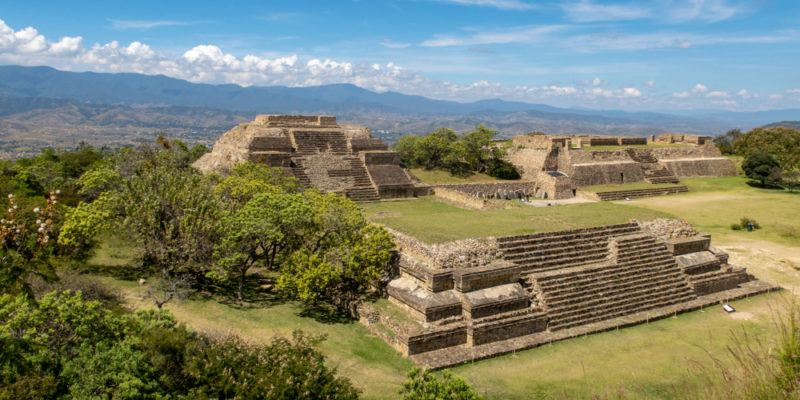
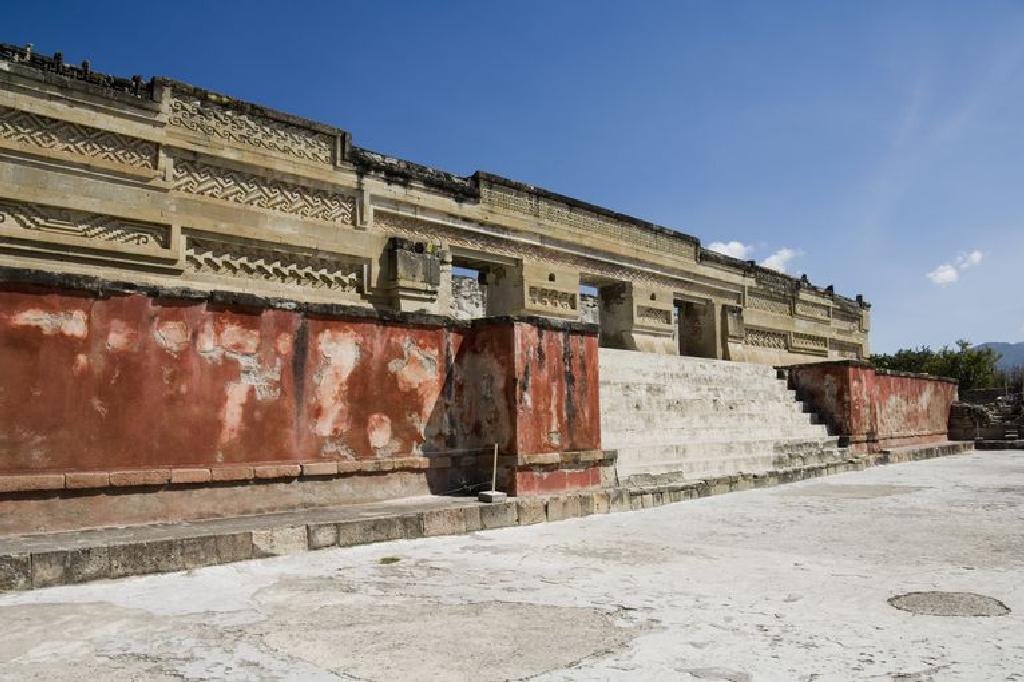

History
Historical Notes about the Mixtec: Pre-Hispanic times through the Conquest
Much about the Mixteca’s pre-history is unknown, but archaeologists agree there were small farming settlements in the region by 1500 BCE. These communities grew and expanded in number so that by the period 500-750 CE there were socially stratified, urban centers. These early societies developed monumental architecture, a calendar, terrace farming, irrigation systems, and glyphic writing (Bartolomé, 1999; Carrasco, 2001).
The 10th century marked the emergence of Mixtec kingdoms, called “señorios” by the Spanish. The señorios were founded on marriage and political alliances which led to the formation of dynasties. Señorios were hierarchical in structure and included classes of greater and lesser nobles, artisans and peasants.
The first reference to Mixtec dynasties appear in the codexes1 from the 10th century. One of the greatest of the Mixtec dynasties was the Tilantongo dynasty, established upon the marriage of two nobles in the holy Mixtec city of Tilantongo in 990CE. The Tilantongo dynasty ruled until the 17th century. One of its most illustrious descendants was 8 Venado, Garra de Jaguar (8 Deer, Jaguar’s Paw, 1053-1115 CE). Several of the codexes tell his story. 8 Venado, Garra de Jaguar became lord of both Tilantongo, in the Mixteca Alta and Tututepec, on the coast, locations separated by a distance of 200 kilometers. He is hailed for having united the entire Mixteca region through battle, alliances and palace intrigues (Bartolomé, 1999).
More:
https://mixtec.sdsu.edu/history.html
. . .

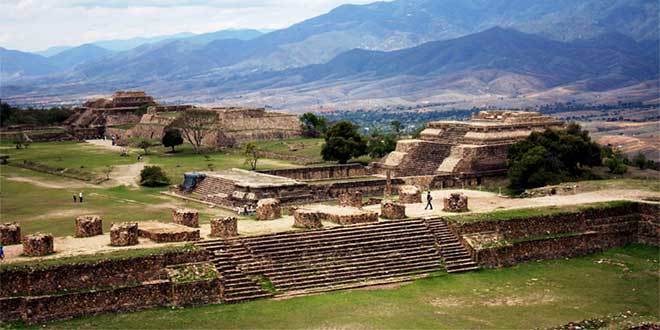

Sunday, 30 October 2016
Zapotec Empire of Central America
The Zapotec civilization was an indigenous pre-Columbian civilization(700 BC - 1521 AD) that flourished in the Valley of Oaxaca in Central America in present day Mexico. Archaeological evidence shows that their culture goes back at least 2,500 years.
The Zapotec left archaeological evidence at the ancient city of Monte Albán in the form of buildings, ball courts, magnificent tombs and grave goods including finely worked gold jewelry. Monte Albán was one of the first major cities in Mesoamerica and the center of a Zapotec state that dominated much of the territory that today belongs to the Mexican state of Oaxaca.
The Mesoamerican ballgame was a sport with ritual associations played since 1,400 BC by the pre-Columbian peoples of Ancient Mesoamerica. The sport had different versions in different places during the millennia, and a newer more modern version of the game, ulama, is still played in a few places by the indigenous population.
The Zapotec languages belong to a language family called Oto-manguean, an ancient family of Mesoamerican languages. It is estimated that today's Oto-manguean languages branched off from a common root at around 1500 BC. Zapotec is a tone language, which means that the meaning of a word is often determined by voice pitch, essential for understanding the meaning of different words. The Zapotec languages features up to 4 distinct tonemes: high, low, rising and falling.
More:
http://www.humanhistoryinbrief.net/2016/10/zapotec-empire-of-central-america.html
Grenada: Confronting my family's slave-owning past
By Laura Trevelyan
BBC News, Grenada
Published3 hours ago
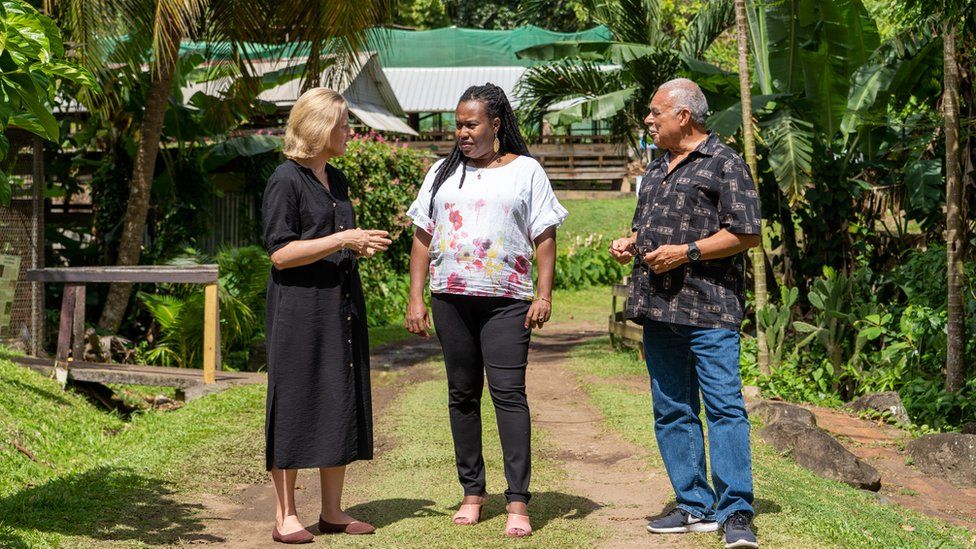
Nicole Phillip-Dowe, DC Campbell and Laura Trevelyan explore a former slave plantation on Grenada
Nearly 200 years after her ancestors were given a large payout from the British government when slavery was abolished, our correspondent travels to Grenada to find out how this grim legacy continues to reverberate today.
_ _ _ _ _ _
High up in the hills of the Caribbean island of Grenada, in the grounds of a former slave plantation, a cast iron bell hangs from a tree.
The ringing of the bell signified the start of another working day for West African slaves, harvesting sugar cane. Today, the Belmont estate is a popular destination for tourists. It's a place to enjoy the local cuisine and visit the gift shop, where you can buy artisanal chocolate bars embossed with the image of the slave bell.
It was here that I came face to face with the brutality of the past - and the role played by families like mine.
"This is the sound of slavery," said DC Campbell, a Grenadian novelist and descendent of slaves. He picked up a pair of shackles made for a child, turning them over in his hands.
More:
https://www.bbc.com/news/world-latin-america-61315877
Profile Information
Member since: 2002Number of posts: 162,115